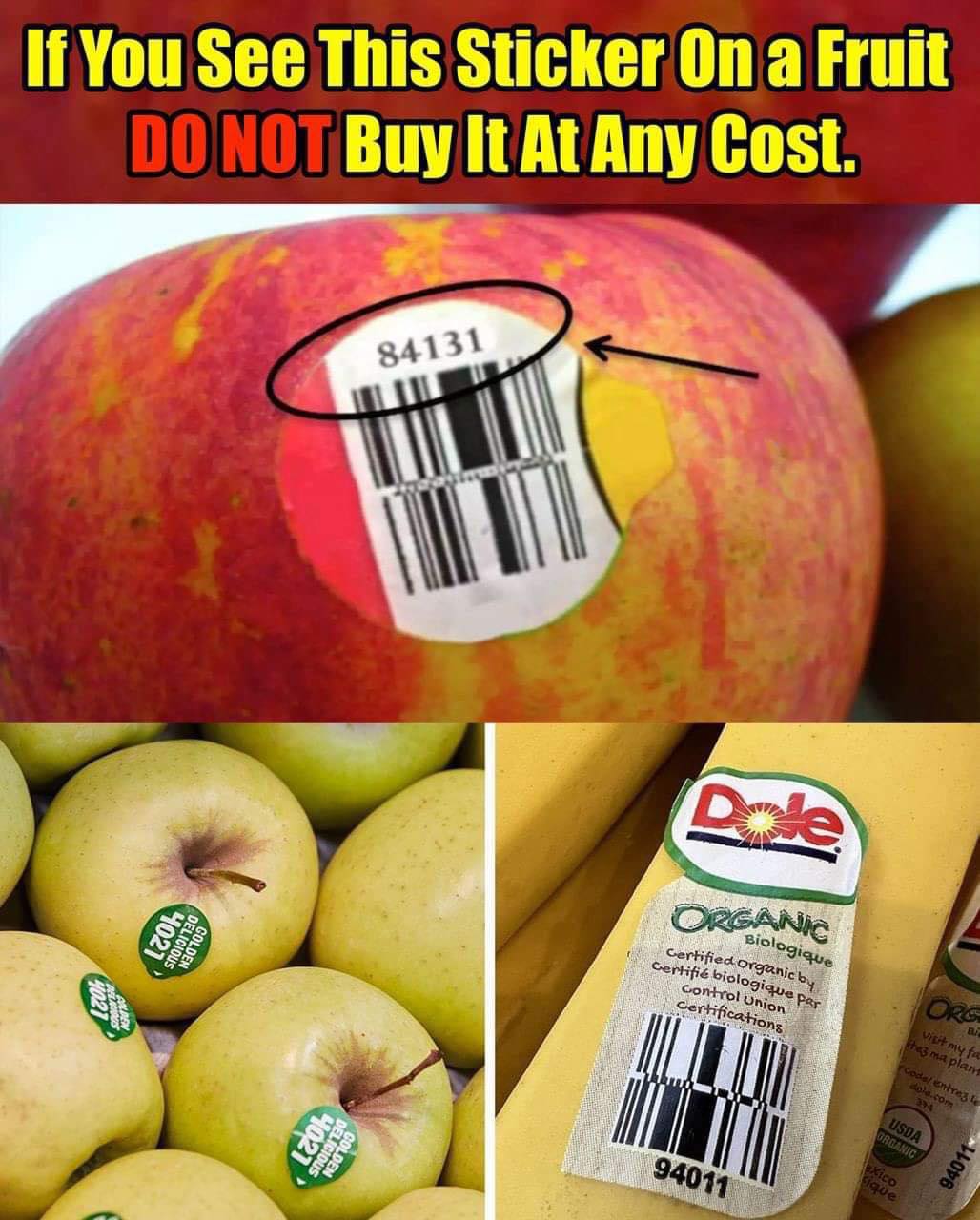When grocery shopping, most people focus on well-known brands, expiration dates, and price tags. However, when selecting fruits and vegetables, choices are often based on appearance and ripeness. What many shoppers overlook is that those small stickers found on produce contain more than just branding and pricing—they hold key insights into how the food was grown and whether it aligns with personal health and ethical preferences.
These stickers typically include a series of numbers that reveal important details about the produce’s origins and farming methods. Understanding these codes can empower you to make more informed choices for yourself and your family. Let’s explore what these numbers mean and how they can influence your buying decisions.

What Do the Numbers on Fruit Stickers Indicate?
The Number 9: Organic Produce
If a fruit sticker has a five-digit code that begins with the number 9, it means the produce was organically grown. Organic farming avoids synthetic pesticides, chemical fertilizers, and genetically modified organisms (GMOs), aiming to support environmental sustainability and reduce exposure to harmful substances.
For many consumers, buying organic isn’t just about avoiding chemicals—it’s about supporting farming practices that prioritize soil health, water conservation, and biodiversity. Seeing the number 9 on a fruit sticker confirms that the item adheres to these principles. While organic products may come at a higher price, many believe the benefits to health and the environment make it a worthwhile investment.
The Number 8: Genetically Modified (GMO) Produce
If the sticker’s code starts with the number 8, it signifies that the produce is genetically modified. Genetic modification involves altering a crop’s DNA to enhance resistance to pests, improve tolerance to extreme weather, or extend shelf life. While GMO crops can offer benefits such as higher yields and improved nutritional content, they remain a topic of debate.
Supporters argue that GMOs play a crucial role in addressing global food shortages and improving farming efficiency. However, critics express concerns about potential health risks, such as allergic reactions or unknown long-term effects, as well as environmental risks related to biodiversity loss. Common genetically modified fruits include papayas, apples, plums, strawberries, and grapes. By recognizing the number 8 on a sticker, you can make an informed decision based on your stance on GMOs.
Why Do These Numbers Matter?
The numbers on fruit stickers provide a simple yet effective way to align your purchases with your health priorities, ethical values, and lifestyle preferences. Whether you prefer to avoid GMOs, support organic farming, or simply learn more about the origins of your food, these labels act as a valuable guide.
Here’s a quick reference:
- If the code starts with 9: The produce is certified organic.
- If the code starts with 8: The produce is genetically modified (GMO).
By familiarizing yourself with these codes, you gain greater control over your choices in the produce aisle. Instead of relying solely on appearance or price, you can choose items that better match your dietary goals and personal values.
How to Make Informed Produce Choices
The next time you’re shopping for fruits and vegetables, take a closer look at those little stickers. They’re not just for scanning at checkout—they hold crucial information about the growing methods behind your food. If you’re aiming to reduce exposure to synthetic chemicals or support environmentally friendly farming, look for produce with the number 9. Conversely, if you’re concerned about consuming genetically modified foods, the number 8 can help you identify GMO products.
These stickers empower shoppers by providing insights that lead to better purchasing decisions. Understanding their significance allows for more intentional choices that benefit not only your health but also the environment and farming communities. Every purchase you make influences agricultural trends, whether you’re supporting organic farming or engaging in discussions about biotechnology and food production.
The Bigger Picture: How Your Shopping Choices Shape Agriculture
While the numbers on fruit stickers may seem minor, their implications are significant. Each decision made in the grocery store contributes to broader food production trends. Choosing organic produce supports farmers dedicated to sustainability. Recognizing GMO labels educates consumers on agricultural advancements and the debates surrounding them.
In today’s diverse food landscape, where farming practices vary widely, these small stickers can be a powerful tool for making informed choices. They help you shop with purpose, ensuring the produce you select aligns with your health goals and values. The next time you’re in the produce section, don’t overlook those tiny labels—they’re packed with information that can help you make smarter, healthier, and more ethical choices.
By paying attention to these codes, you’re doing more than just buying fruits and vegetables—you’re making a statement about the kind of food system you want to support. Whether your priority is personal health, environmental sustainability, or a deeper understanding of where your food comes from, these tiny stickers offer a gateway to informed and intentional grocery shopping.





